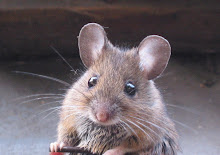I have always liked Victorian novels, Dickens notwithstanding - Jane Austen’s catalogue, Wuthering Heights, Jane Eyre, The Woman in White, Tess of the d’Urbervilles, Dracula, Vanity Fair. I like the stylistic affectations, the manners, the recurring motifs. Thus, it is not surprising that I liked Tooth and Claw by Jo Walton which is a perfect example of a Victorian novel. Except that it was published in 2003 and all the characters are dragons.
At the start of Tooth and Claw, the patriarch of a genteel yet almost impoverished has died, leaving only his reputation – as a good dragon who made his way in the world – and a little wealth behind to be shared amongst his five children. The oldest two have already found comfortable lives for themselves: Penn is a parson, happily married with children of his own; and Berend has married quite well, although everyone thinks her husband is a bit of a bully. The younger three are not quite so secure. Avan has a clerk’s job in town but he’s still trying to make a name for himself and his live-in lover has a less than pristine reputation. The two youngest daughters, Selendra and Haner, are devoted to each other but quite lost when their father dies. They have no one to take care of them – no husbands, no prospects on the immediate horizon – and so Selendra goes to live with Penn and his family and Haner is farmed out to Berend.
What follows are classic Victorian tropes, including (to quote the book jacket because I’m feeling lazy today) “a son who goes to law for his inheritance, a son who agonizes over his father’s deathbed confession, a daughter who falls in love, a daughter who becomes involved in the abolition movement, and a daughter who sacrifices herself for her husband.” There are whingeing clergy attempting to insinuate themselves into the good graces of their betters, devoted and clever servants, icy society maidens and spendthrift young rakes. There are stringent moral and societal codes, stuffy city balls and picnics in the country. Some of the characters are charming and witty, others insufferable and pompous. And, as I mentioned, all the characters are dragons. Fire-breathing (some of them), winged (all of them) dragons.
It is to Walton’s credit that she pulls it off. Not only does her vast knowledge of and affection for Victorian novels allow her to echo those earlier works faithfully, she has a deft enough hand with character, dialogue and narrative to convince the reader that yes, here be dragons. In fact, more often than not I forgot that the characters were make-believe lizards, what with the millinery and the chastity and all, until a small detail like scale color or eating weaker dragons came into it. Kudos to Jo Walton for successfully marrying the two seemingly unmingleable genres.
3 hours ago






No comments:
Post a Comment